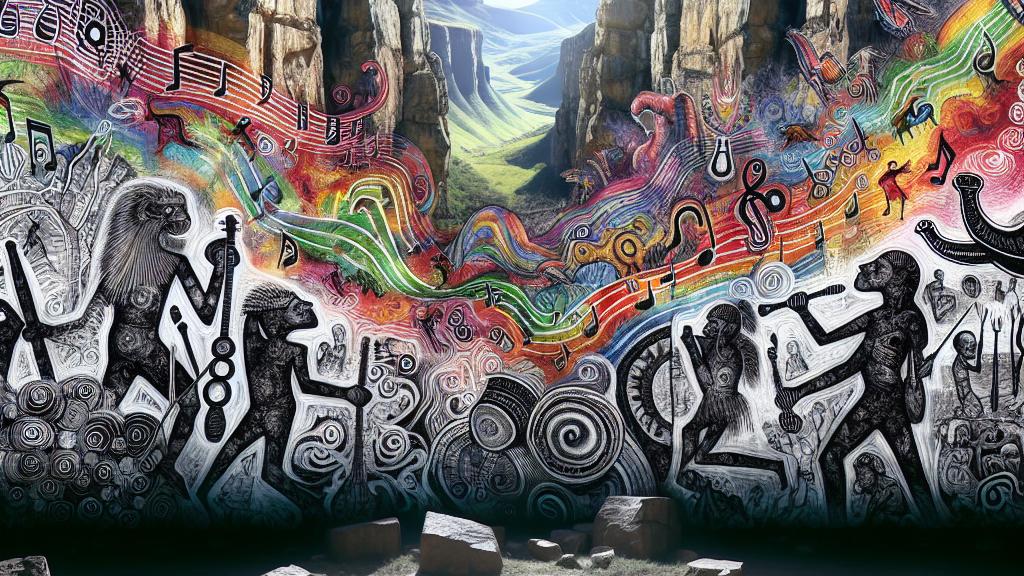Exploring the Connection Between Rock Art and Music in Zimbabwe
Overview
- Zimbabwe's ancient rock art intricately depicts a variety of musical instruments, each rich with cultural significance.
- This enlightening study classifies instruments using the Hornbostel-Sachs system, illuminating their functions and historical context.
- Distinct regional differences reveal the captivating tapestry of Zimbabwean heritage and the profound evolution of its musical landscape.

The Cultural Significance of Rock Art
In the picturesque landscapes of Zimbabwe, ancient rock art serves as a vibrant tapestry, offering us a fascinating glimpse into the rich musical heritage of its people. A groundbreaking study conducted by archaeologists Dr. Joshua Kumbani and Prof. Margarita Díaz-Andreu unravels the deep connections between this ancient art form and the musical instruments it depicts. Primarily found in the eastern regions of Zimbabwe, the rock art showcases elaborate scenes crafted by the San people, emphasizing how integral music was to their daily lives. It's a celebration of community, tradition, and storytelling. For centuries, music has transcended mere entertainment, acting as a crucial medium for communication, celebration, and spiritual expression. This study fills a significant research gap—one that intertwines the narrative of music with visual artistry—showing that each brushstroke and chisel mark reflects the heartbeat of a culture steeped in rich tradition.
Discovering Musical Instruments and Their Context
Through the meticulous application of the Hornbostel-Sachs classification system, the researchers identified and categorized various musical instruments represented in the rock art. Imagine the delightful sounds of rattles, the bold tones of trumpets, and the sweet melodies of flutes—all depicted in these ancient scenes, each telling its own story of function and cultural significance. The findings reveal concentrations of these instruments primarily in regions like Harare and Matabeleland, illuminating a vibrant musical culture that thrived across generations. Interestingly, the absence of certain instruments, such as leg rattles and musical bows often celebrated in South African rock art, raises intriguing questions about cultural preferences and historical practices. Picture a communal gathering under the starlit sky, where the rhythmic pulse of music weaves through the air, fostering unity and shared experiences. This vivid imagery is precisely what the rock art evokes, reminding us that music has always served as the lifeblood of communities, connecting people across time.
Cultural Reflections and Future Prospects
The insights drawn from this study extend far beyond academic curiosity—they resonate with the very essence of Zimbabwe’s national identity. The absence of certain musical instruments in Zimbabwean rock art signifies not just stylistic choices but also a rich narrative that reflects unique cultural identities. While instruments such as the leg rattle—integral to South African dances—are notably missing from Zimbabwean depictions, this further emphasizes the distinctive oral traditions and storytelling techniques that characterize local performances. As Zimbabwe continues its journey of rediscovery, the study of rock art emerges as an essential endeavor, offering invaluable perspectives on how communities have expressed their cultural identities through music. By weaving together art, music, and heritage, we can admire the beautiful complexities of human expression and cultural evolution. Thus, we are left to wonder what other captivating narratives these ancient images conceal, waiting to be uncovered by future generations.

Loading...